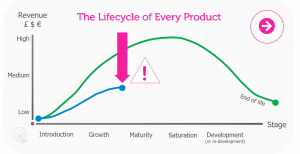
What’s in a Word? (Video)
Sell more by using better words. Compel your prospects to buy from you by harnessing the power of words. Be more positive and audience-centric in the way you use words in all sales interactions.
Call us +44 (0)203 815 8020

 Go to Market strategies apply to individual lines of business (i.e., to each one of your particular products or service lines).
Go to Market strategies apply to individual lines of business (i.e., to each one of your particular products or service lines).
An effective Go to Market strategy is entirely compatible with – and supportive of – your overarching corporate sales strategy.
Many of the same questions asked (and hopefully answered!) at the earlier sales strategy definition stages re-emerge.
Let’s be really clear on our target markets, the Value Proposition, modes of communication etc.
But in thinking about your Go to Market strategy for individual lines you may have to get more granular?
Different solutions intended for “the exact same market” may well benefit from subtle variations in communications, messaging and timing across, say, the demographics within that “same market”.
Go to Market strategies are so often created in the run up to a new product launch and then put away and forgotten about to gather dust.
Let’s recognise that whilst a new launch is critical to sustaining success and growth whilst the market is capable of sustaining such growth, there will come a time when what was once a hot product starts to move into its sunset years.
Successful businesses revisit their Go to Market plans for each service line periodically. Even when a product seems to be selling well, sales may be diverging significantly from your plan and heading toward retirement ahead of schedule. Armed with intelligence of this sort, future investment can be curtailed and re-directed towards new, more promising lines.
 But let’s be clear: every product, no matter how good, dies in the market at some point.
But let’s be clear: every product, no matter how good, dies in the market at some point. When we understand this, we know that we must plan for those sunset years right up front, so that we can make appropriate sales investment decisions over the entire projected lifecycle.
And by “appropriate” we mean, of course, “most profitable”.
Factors to consider for a solid Go to Market strategy that is going to work properly for you include:
Our workshops cover all of these bases with you.
We have template Go to Market (GtM) plans which we tailor for you so that your new GtM plans accurately reflect the market potential of your lines, bringing insights into when they are likely to become profitable and unprofitable (and should be retired).

Programme Director, Health Tech

Sell more by using better words. Compel your prospects to buy from you by harnessing the power of words. Be more positive and audience-centric in the way you use words in all sales interactions.

You can make profound changes to your sales conversion rates...

The sales proposals and presentations that they developed with us were outstanding. The underlying messages were simple and crisp, appealing directly to our targeted audiences. Their role in delivering key sales wins in London and in the South West was absolutely invaluable

Here we take a look at the things you should consider before...

Get Ready to Walk At the end of your sales meeting or call...
© 2024 · Quantum International Group Ltd. All Rights Reserved